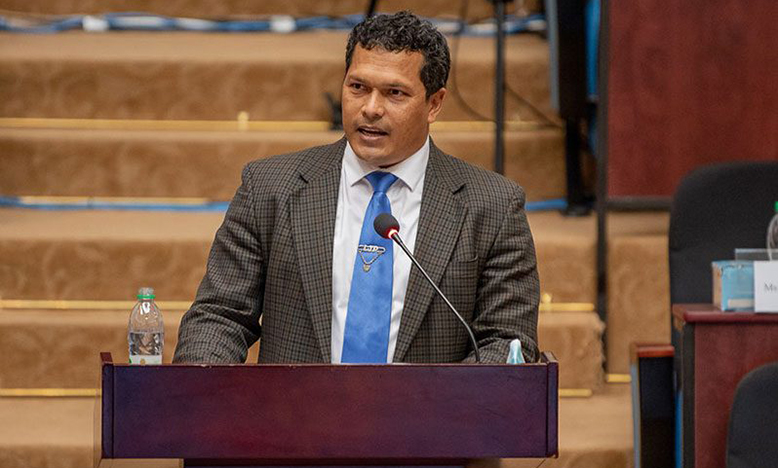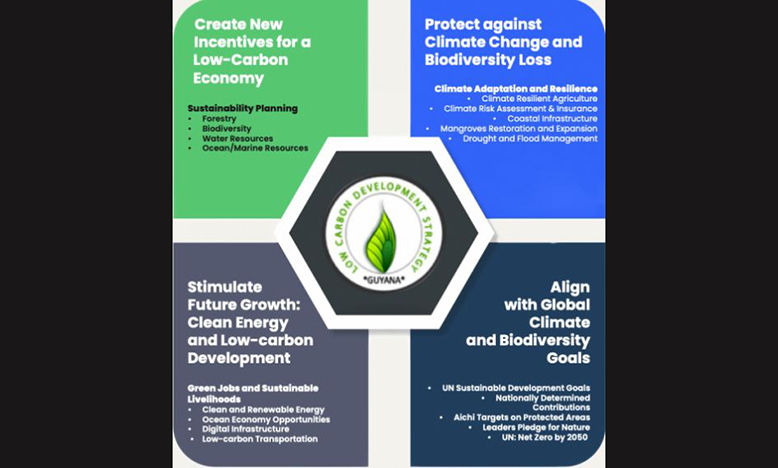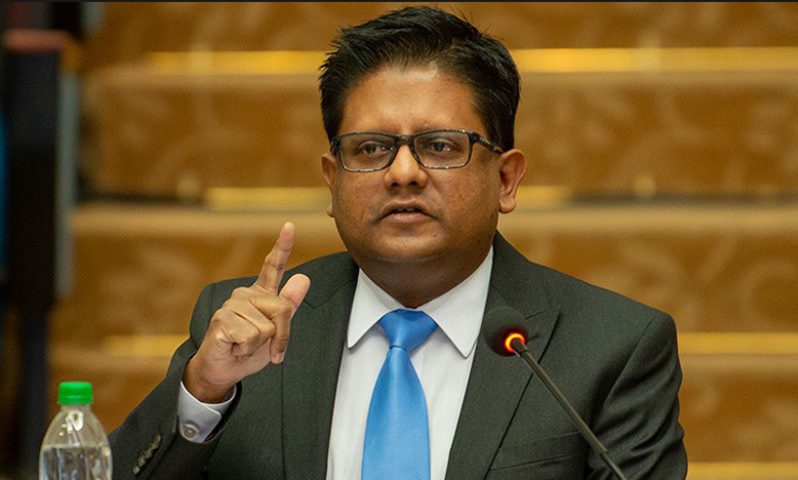–paves way for investment of revenue from forest carbon markets
–lauded for wide public consultation, including in Amerindian communities
THE National Assembly, on Monday, officially welcomed the tabling of the Low Carbon Development Strategy 2030, paving the way for Guyana to advance with investing its revenue from forest carbon markets.
Senior Minister in the Office of the President with responsibility for Finance, Dr. Ashni Singh, moved the motion to table the updated strategy which went through many rounds of public consultations since late 2021.
Monday was the 49th Sitting of the National Assembly of the Twelfth Parliament.
The draft version of the LCDS 2030 was launched in October 2021. It was built from the 2009 version of the strategy, which was also updated in 2013.
The LCDS subsequently underwent months of national consultation during which community-level consultations took place along with engagements with national stakeholders.
During the presentation of the motion, the minister of finance said that in the initial stages of the 2009 LCDS, substantial amounts of resources were mobilised, and further facilitated investment in a number of projects to push Guyana’s move to a low carbon state.

“The original LCDS not only mobilized a substantial amount of resources but also facilitated [the] investment of those resources in a number of very important projects,” Dr. Singh said.
At that time, he added, Guyana was well-positioned as a global leader on the subject of low carbon development just prior to the People’s Progressive Party/Civic (PPP/C) demitting office in 2015.
Minister Singh said that all of the work initially completed for the 2009 LCDS was brought to a crashing halt as the globally-focused strategy was abandoned, and Guyana ceased to earn revenue from it.
Specifically, the Finance Minister revealed that all of the projects that were intended to benefit the people of Guyana were shelved, including the Amerindian Land Titling Project, the Hinterland Information and Communication Technology (ICT) Project, among others.
Instead of using the work that had already been done to advance national development, the then David Granger-led coalition government developed their own “Green State Development Strategy” which, Dr. Singh added, was not indigenous to Guyana.
 The 2009 LCDS was, however, an indigenous strategy as it was completely local and ensured that Guyanese were consulted in the process.
The 2009 LCDS was, however, an indigenous strategy as it was completely local and ensured that Guyanese were consulted in the process.
“When it comes to the issue of low carbon development, the 2015 to 2020 years can be characterized as lost years,” said Dr. Singh, adding that the PPP/C gave its commitment while in opposition to rework and prepare the updated LCDS for it to reflect new realities.
Much has changed since then as it was related that Guyana became an oil-producing nation and that needed to be taken into account. What has not changed, however, is the government’s commitment to accelerated development in Guyana along a low carbon path, Dr. Singh noted.
He stressed that as Guyana is now an oil and gas producing country, the Dr. Irfaan Ali-led administration feels even more strongly about the importance of maintaining Guyana’s low carbon footprint.
Meanwhile, during the debates and presentation of the motion, the majority opposition, APNU+AFC, was not present.
Deputy Speaker and Opposition member, Lenox Shuman, rose in the House as the lone member on the Opposition benches, but voiced his support for LCDS 2030.
During his presentation, he lauded the extensive consultations that were held by the current government, specifically with the indigenous communities.
Contrasting the consultation processes of the LCDS 2030 compared to the APNU+AFC Green State Development Strategy, Shuman told the House that no line of communication was sent to the then National Toshaos Council during the APNU+AFC government. He said also that indigenous people continued to demand that their voices be reflected in the APNU+AFC’s strategy.
He indicated that when indigenous communities were consulted for LCDS 2030, what they have seen thus far in the published document is a lot of what was contributed by the indigenous community.
“I’m happy to say that I see a lot of what we contributed in the Low Carbon Development Strategy. We talk about responsible mining in rivers and forests, developing a larger framework for legislation, and how we deal with overlapping land titles and a series of things,” Shuman expressed.
The reality, Minister Singh added, is that forests are an extremely valuable part and one of the most effective mechanisms in global climate solutions.
With that, Dr. Singh noted that the LCDS 2030 takes Guyana forward and creates a new stream of revenue for investment in low carbon. It will also ensure that the country maintains its position as a net-zero country.
LCDS 2030 will be accompanied by an investment plan that will outline the main programme areas for each sector within the LCDS.
The Investment Plan 2030 will identify project-based initiatives that will be undertaken. The document will also identify budget and financing options.
This plan is expected to be reviewed every three years, for update if necessary




.png)









